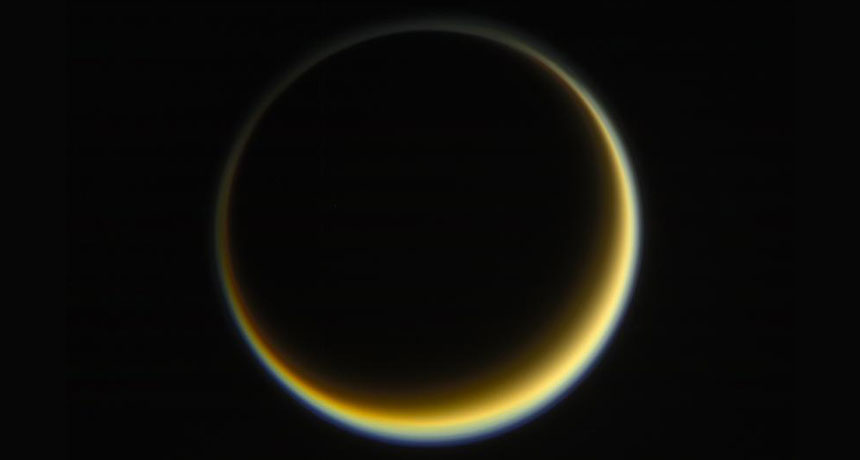Final flyby puts Cassini on a collision course with Saturn

After one last swing past Titan, the Cassini spacecraft is now plunging to its doom. At 3:04 p.m. EDT (12:04 p.m. PDT) on September 11, the spacecraft used a gravitational nudge from Saturn’s largest moon to set itself on a collision course with the giant planet’s atmosphere on September 15.
Cassini’s last close flyby of Titan on April 21 curved the spacecraft’s orbit to send it on a series of dives between Saturn and its rings. That approach took the probe to about 979 kilometers above the moon’s surface. This final flyby, which the mission team calls the “kiss goodbye,” is a more distant 119,049 kilometers — but that’s enough to slow the spacecraft down and send it into Saturn’s atmosphere, where it will ultimately melt and disintegrate.
“There is no coming out of it,” Cassini project manager Earl Maize said in a press conference on August 29. “That final kiss goodbye, I don’t want to get too romantic about it, but that really is our last flyby.”
Titan is home to lakes and rivers made of liquid hydrocarbons, which may be hospitable to life unlike that on Earth. Mission engineers decided to send Cassini to burn up in Saturn’s atmosphere in part to protect any potential life-forms from contamination if Cassini accidentally crashed into Titan.
Cassini has been orbiting Saturn since 2004 and has revolutionized our understanding of Saturn’s atmosphere, rings, moons, and of the outer solar system in general.